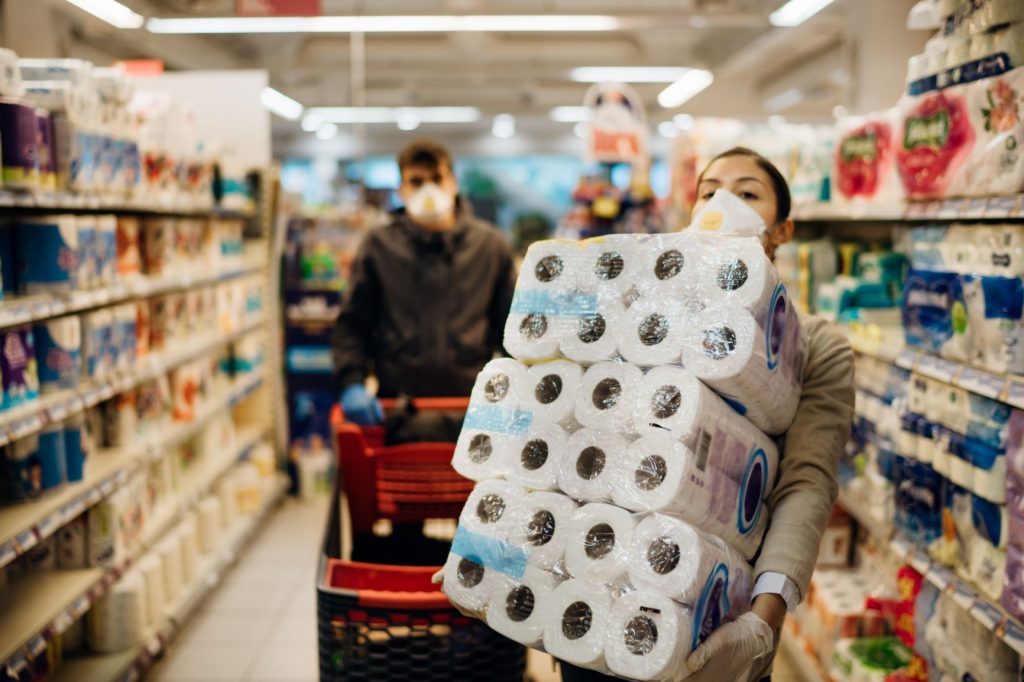“The Toilet Paper Effect”
How good communication can prevent bottlenecks
Nils Jäger | 10. June 2021
Last year, we experienced the “Toilet Paper Effect” as I like to call it. Many will remember that toilet paper was sold out in several countries. If excess was available, people often bought more than they actually needed. A strange cycle developed. Who knows when toilet paper will be for sale again. So it’s better to buy more than is strictly necessary. That is the way many people thought. The result was that manufacturers were unable to produce enough to satisfy demand. Later the same year, both the supermarket shelves and the bathroom cabinets in people’s homes were full.
A similar phenomenon has now arisen in industry. The background is admittedly much more complex, but a few parallels can nevertheless be identified.

Consequences of the crisis
In the last few months of the Corona crisis, air traffic was severely limited. Transport capacity fell, causing interruptions in the supply chain. Moreover, many businesses reduced production because of the lockdown and general uncertainty.
At the same time, however, demand for digitalisation greatly increased due to such factors as home offices, 5G expansion and gains made by electromobility. So now manufacturers are being forced to increase their production capacity again. This, in turn, requires new machines that, incidentally, also need various parts. This chain of circumstances has led to a shortage of the most obvious raw materials, such as PVC. Demand is immense, causing prices to rise.
The Toilet Paper Effect
In addition to increased demand, the Toilet Paper Effect is setting in. Supply bottlenecks are causing companies to buy more than they really need just to be on the safe side. They want to protect themselves from production stoppages and buy before prices shoot up again. The media are already reporting that motor vehicle manufacturers are having to shut down production because important parts are currently not available. Machine building is having the same problem. At the moment, machine and system manufacturers are receiving orders thick and fast. Demand is causing material prices to skyrocket, and we as a cable supplier are sensing this development and reacting accordingly.
The situation at igus
We increased our storage quantities weeks ago in order to keep up with this rush. That was exactly the right decision, since, more and more frequently, we very are receiving large requests for goods to be delivered in the next few weeks.

We are very happy that customers are bringing these requests to us. And, of course, we want to deliver at the times they are asking for. But even the best warehouse will eventually be empty if demand is above average. But there are ways of improving the situation. I will explain more after an overview of the individual cable types.
Big sellers vs. shelf warmers
As a catalogue supplier, igus has both. Cable types that sell like hotcakes and cables that gather dust because they are so rarely ordered. There are reasons why we carry both. For big sellers, the reason is obvious. Many machines use Profinet cables or a servo cable with a (4G1.5+(2×1.5)C)C design. Such products can be offered profitably and stocked accordingly. But why should anyone have shelf warmers available from stock?
igus has taken on the task of delivering problem solutions from stock. This also means stockpiling cables for which the demand is not particularly high. One example is a thermal compensation cable suitable for energy chains. Because such a cable is normally installed statically, the variant for chains is not used as often as a Profinet cable is. Nevertheless, it remains an important component of our product portfolio for covering customer requirements.
Greatly increased demand, however, can in both cases thwart even the best of plans.
For big sellers, the chances are high that many customers will have much greater demand than they did previously. This can lead to a jump in weekly consumption. The shelf-warmer’s case is different: it is more likely that only one customer will increase weekly consumption, but by multiples of what it was before. The result is the same in either case: empty storage shelves and unhappy customers. Good communication between customer and supplier can counteract this effect.
It helps to talk
I encourage both my sales colleagues and our customers to communicate openly. Machine and system construction in particular requires a certain amount of project planning. Even if demand has not been determined with 100% certainty, it often helps us to already know a tendency.

That way, we can determine ahead of time whether we can manage the desired quantity by the desired delivery time. The larger the project is, the more important this knowledge becomes. In boom periods like the one we are in now, it is especially helpful to us as a supplier to be able to plan production capacities so that we can secure the required stocks. Conversely, we can use this planning to clearly communicate reasonable delivery times. This facilitates customer planning for project completion. Partial-order quantities are another possible approach, since 20km of cable is often not needed all at once. The better the communication, the better the solution we can work out together.
Conclusion
Good, open communication between supplier and customer is important and can be especially helpful in turbulent times. We all have deadlines to meet, and when there is a serious problem, a frank conversation goes a long way towards the solution. It is amazing how much we can learn from the Toilet Paper Effect.

